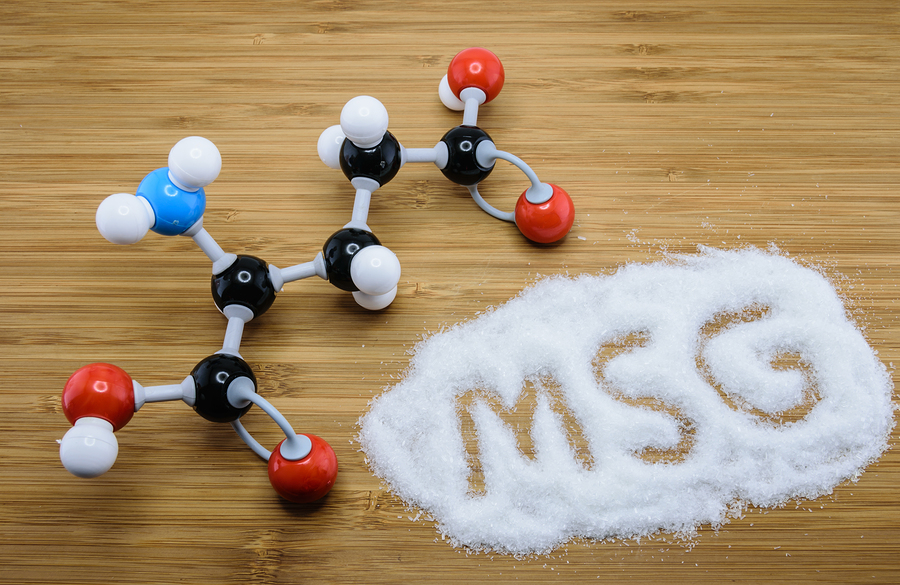- Make It Yourself Lavender Heart-Shaped Bath Bombs!
- 20 Things You Never Knew About “Down There”
- 12 Best Foods For Those Suffering From Arthritis Pain
- 12 Personal Hygiene Mistakes Almost Everyone Makes (Mom Never Told You About #4!)
- 15 Medicinal Plants And Herbs From The Cherokee People
- 12 Mind-Blowing Benefits Of Drinking Coconut Water During Pregnancy
- 12 Outstanding Winter Foods That Won’t Fatten You Up Like A Christmas Turkey
The Dangers Of This One Ingredient (And It’s In Almost Everything Americans Eat! )

Photo credit: bigstock.com
By now you have probably heard about the dangers of MSG. The problem is that most people think MSG is only in Chinese food or soy sauce. The truth is that this ingredient is in so many foods you probably consume every day and don’t know it.
The FDA only classifies MSG (monosodium glutamate) as a food additive that they consider to be perfectly safe. This additive is used to improve or enhance the flavor of food products, including packaged foods and restaurant meals.
MSG is a neurotoxin that overexcites the cells causing everything from mild reactions to severe health problems, even cell death. This man-made version is made out of 80 percent free glutamic acid and 20 percent sodium. Glutamic acid is a nerve stimulant which tricks the brain into believing that something tastes better than it actually does.
The dangerous side effects of MSG were first reported as far back as 1968. Just some of the most common symptoms include feelings of weakness or numbness in the arms and heart palpitations. The Federation of American Societies for Experimental Biology was commissioned by the FDA to find out if there were any possible side effects to MSG. The symptoms that the FASEB found are referred to collectively as “the MSG complex.”
The free glutamic acid that is put in food can lead to some serious reactions, especially if you happen to be one of those persons with a sensitivity to MSG. Believe it or not, MSG is also found in other things besides food. You will find MSG in a type of plant growth enhancer called AuxiGro. It can also be found in other types of plant fertilizer and fungicides. By the way, the truly terrible news is that these types of fertilizers are approved for use in “organic” foods.
Let’s take a look at the major symptoms that many people experience when eating MSG:
- Circulatory issues which include swelling
- Visual problems which include blurred vision, feelings of pressure around the eyes, and difficulty focusing on objects
- Cardiac issues such as slow heartbeat, palpitations, angina, atrial fibrillation, rapid heartbeat, and extreme highs or lows in blood pressure
- Gastrointestinal problems including vomiting, diarrhea, stomach cramps and nausea
- Muscular pains, stiffness, flu-like aches and pains, and joint pain
- Urological problems include bladder pain, frequent urination, swelling of the prostate, and spotting
- Neurological problems such as depression, anxiety, mood swings, confusion, disorientation, panic attacks, chills, numbness, slurred speech, and uncontrollable shuddering
- Skin problems are very common including hives, mouth lesions, tingling, dryness of the mouth, tongue swelling, bags under the eyes, numbness in the skin, rashes, and temporary paralysis.
- Respiratory issues including things like asthma, runny nose, chest pain, sneezing, shortness of breath, and a feeling of tightness in the chest area
Continue to Page 2

Photo credit: bigstock.com
The side effects from MSG can begin anytime between 15 and 30 minutes after consumption and generally disappear after about 2 hours. There have been a few cases, however, of people stricken with asthma attacks that were directly related to the consumption of MSG and symptoms occurred within 12 hours. Also, hives tended to last longer with most people experiencing them within 24 hours and lasting for another 24 to 36 hours.
Did you know that even some brands of baby food and infant formula contain this poison? It’s true and to top it off, infants and children can be as much as four times more sensitive to this toxic chemical.
The dangers of MSG are perhaps the most concerning when it comes to new mothers who cannot breastfeed for one reason or another. It can be difficult to find formula that does not contain MSG.
Everything from soup to crackers, even meat can contain MSG because it makes food taste good, even if that food is cheap or disgusting. Your brain will think it’s the be
Want to Avoid This Substance?
The following is a list of the most common ingredients that always contain MSG:
- Hydrolyzed protein
- Autolyzed yeast
- Textured protein
- Yeast extract
- Gelatin
- Yeast nutrient
- Glutamic acid
- Monopotassium glutamate
- Monosodium glutamate
- Corn starch
- Calcium caseinate
- Anything listed as “enzyme modified”
- Sodium Caseinate
- Barley malt
- Yeast foods
- Flavoring, seasoning, or flavor
- Enzymes
- Soy sauce
- Powdered milk
- Stock or broth
- Protease
- Powdered milk
- Carrageenan
- Kombu extract
- Pectin
- Malt extract
- Worcestershire sauce
- Maltodextrin
- Soy protein
- Soy protein isolate
- Anything listed as ultra-pasteurized
- Anything listed as protein fortified
READ ALSO: What Exactly is MSG and Why is it so Bad for You?
Of course, rather than reading labels, the best way to avoid MSG is to avoid all processed foods. Eat a clean, whole food diet that includes plenty of vitamin C rich foods and fresh ginger. These two items have been proven to have powerful, protective effects against MSG.
References:































